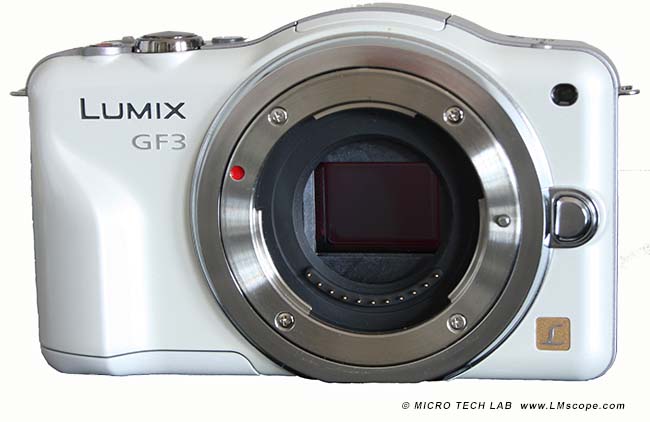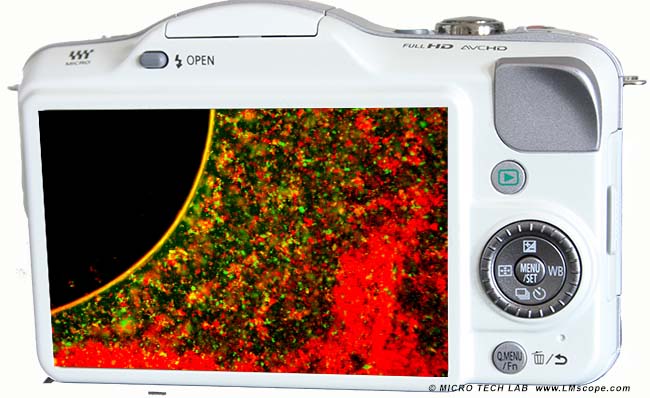

System cameras (cameras with an interchangeable lens mount system and no mirror) on the microscope
An interesting alternative to DSLR and compact cameras are system cameras, which have been on the market for a few years now. Where buyers previously had to choose between DSLR and compact cameras, they now can strike a happy medium with a system camera. The question in our particular case is whether system cameras are also suitable for use on a microscope.

System cameras combine many of the benefits of DSLR and compact cameras. They are small and light and thus very well suited to outdoor use, but nevertheless have a large sensor and therefore deliver excellent image quality. Their low weight is due to the fact that they do not have a mirror system for viewing, which is irrelevant when the camera is used on a microscope. All modern cameras have a Live View function which enables the user to prevent the mirror from vibrating upon shutter release.
Far more critical for use in microscopy is the lack of some operating controls, such as the + and – buttons of the magnification function in Live View mode. These are very handy for adjusting the focus if the camera cannot be controlled via PC or Mac. Setting the focus via the menu is very inconvenient. Some cameras also have the option to assign various functions to free buttons.

The main target group for system cameras are ambitious hobby photographers who mainly shoot outdoors. For them it makes sense to simplify the use of the camera by reducing the operating controls and streamlining the menu structure. The emphasis is clearly placed on automatic functions.
At present, the most serious disadvantage of system cameras is that there is not yet a way of controlling them via PC or Mac. Even Canon and Nikon, who for many years now successfully provide software packages for controlling their DSLR cameras, do not offer a similar option for their system camera models.
Some system camera models, for example the Panasonic Lumix GF3, also do not feed the video signal in Live View mode to the HDMI output. This is particularly disappointing, as this function is very useful for focussing on a large screen.
Test reports are available for the following system cameras:
Canon EOS M
Sony NEX-6
Panasonic Lumic GF3
Conclusion:
System cameras are compactly designed and their weight is minimal. They are primarily intended for outdoor use and have only limited suitability for microscope applications. We currently recommend the admittedly somewhat larger and heavier DSLR cameras, because they offer significantly more options. If you have decided to purchase a system camera and also want to use it to capture microscopic views, it is essential to check that the camera satisfies the following criteria:
- Live View with zoomfunction
- possibility to release with not original lenses
- controlable from PC/Mac
- Live View on HDMI exit
06.11.2014
Caution! This manual is protected by copyright. Unauthorised reproduction thereof, in whole or in part, is punishable by law. Only use with MICRO TECH LAB’s approval.